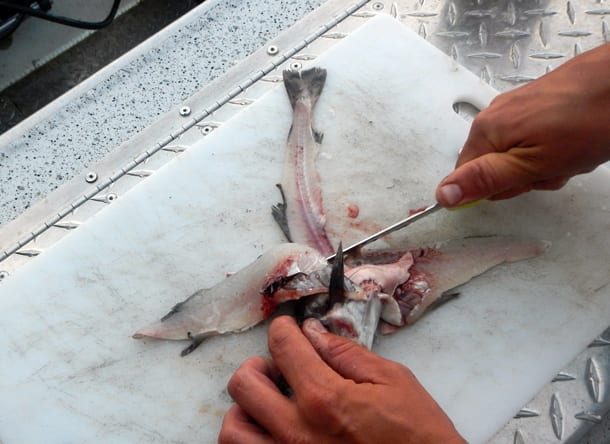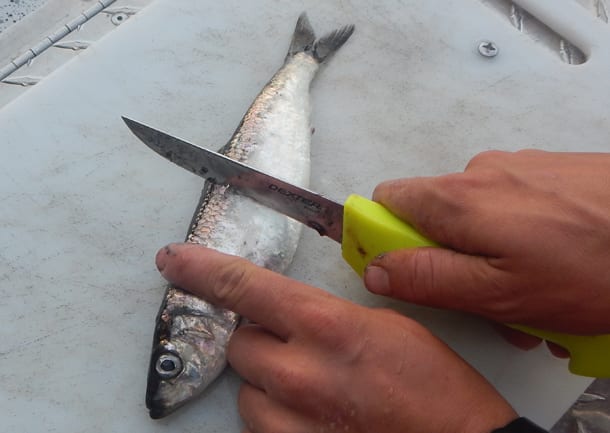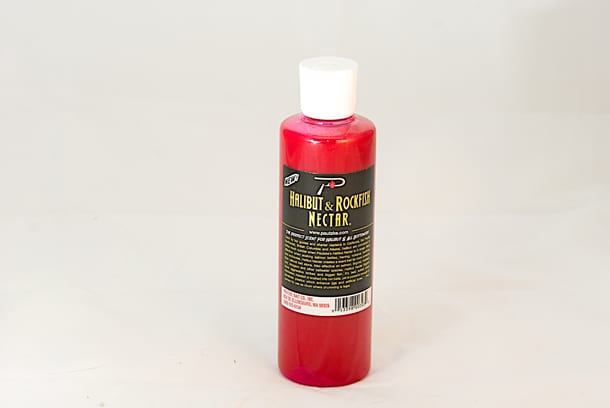Spawn
Pros Reveal Secrets How To Catch Big Halibut
By Andy Martin | 08/06/2014
While just about every charter boat captain in Alaska will catch a few trophy halibut each season, consistently tricking big flatties into biting is no accident. To bring multiple halibut back to the dock week in and week out, you must be deliberate in targeting big fish. Aside from knowing where to fish and how to time the tides, getting big halibut to bite requires two things: big baits, and lots of scent.
SONY DSC

Large halibut will often pass up small baits, such has a half herring, and not bite at all. But if you present something bigger, that smells good to the fish, your chances of getting trophy halibut steadily improve. Where Captain Rye Phillips and I fish in Southeast Alaska, there are no bait and tackle shops. We must catch our own bait, either trolling for pink salmon, or using sabiki rigs to catch herring and pollock. Since herring and pollock are easiest to find and catch, they tend to be our most used baits.

(Above) Fresh pollock and herring, combined with Pautzke Halibut & Rockfish Nectar, are one of the best all-around halibut baits available.
Herring and pollock will catch plenty of fish by themselves, but we’ve learned they are drastically more effective when combined with added scent, especially Pautzke’s Halibut & Rockfish Nectar. Nectar is made from curing salmon eggs and has a natural salmon scent to it. Halibut like to eat salmon, which is one of their biggest sources of natural food. Adding the Nectar creates an instant scent trail to the baits, and we’ve found leads to more aggressive bites.




(Above) Butterflying pollock allows them to soak up the scent from the Pautzke Nectar, and makes it easier for a halibut to bite and get hooked.
Before soaking our baits in Halibut & Rockfish Nectar, we like to butterfly the pollock, and cut the herring in half. Doing so allows them to soak up the Nectar scent, and then release more scent into the water. To butterfly, cut each side of the fish along the backbone to the tail, leaving the top of the fillet attached to the head. Remove the spine. When hooked, this helps create an enticing action, and allows the bait to collapse in the halibut’s mouth, ensuring a better hookup ratio.

(Above) Slicing herring in half allows it to take in more scent when bringing.


(Above) Butterflied pollock and cut up herring are placed in a bucket and brined for a few hours in Pautzke Nectar.

We brine our baits in a small bucket and allow them to soak up the Nectar scent for a few hours on the way to the fishing grounds. As we go through baits, we add more butterflied pollock and cut herring to the bucket.

(Above) A butterflied pollock is attached to a size 16/0 Eagle Claw circle hook.

(Above) Pieces of herring are stacked on a circle hook.
While pollock are fished whole, we like to either stack several herring on a hook, or several pieces of cut herring. Staying with the idea of using a big bait, we like the largest herring we can find, and by cutting them and stacking them on the hook, we still have a large bait that is full of scent.
Typically our baits are fished within a foot of the bottom. We like to have our customers lower their baits to the ocean floor, and then reel up a crank and wait for a bite. If we are fishing in moderate to strong current, the rods are placed in the holders until a fish strikes. In lighter current, or while drifting, jigging baits along the bottom often works better.
Editor’s note: Pautzke Pro Staffers Andy Martin and Rye Phillips (who co-authored this blog) have a well-earned reputation for putting customers on barn door halibut. Each year the two Alaskan charter boat captains help people catch dozens of fish pushing 150 plus pounds. Big baits and lots of scent are their keys to success for massive halibut.






